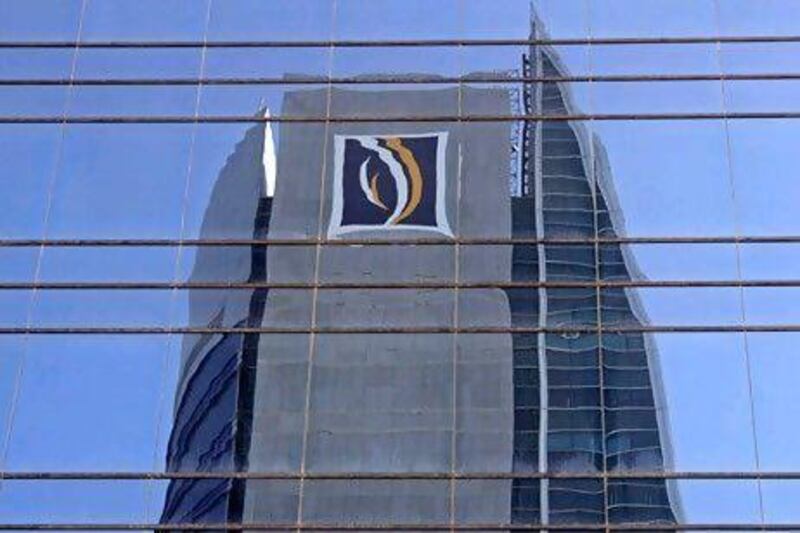The decision to strip the former Royal Bank of Scotland chief executive Fred Goodwin of his knighthood last week was a reminder that the aftershocks from the global recession have not gone away.
Mr Goodwin was knighted in 2004 but had the honour removed after he was blamed for his part in the British bank's collapse in 2008.
The action by the British government came weeks after RBS revealed it was shedding 3,500 jobs under cutbacks aimed at helping to revive the bank's fortunes.
In the UAE, lenders have not had the same scale of problems as RBS or other major European lenders.
The latest banking results paint a generally improving picture, with most lenders reporting healthy profits and sizeable dividend payments to shareholders. But a closer look at the fourth-quarter numbers suggests many banks are still grappling with the aftermath of the 2008 global financial crisis.
Non-performing loans (NPLs) and write-offs at many banks remain high, indicating they are still working through the system.
"Net interest income has been surprisingly strong," says Raj Madha, a banking analyst at Rasmala Investment Bank.
"We have seen banks write off a big chunk of NPLs, lowering their ratio, which may show they are sorting out the good from the bad and the hopeless."
The "bad and the hopeless" have mainly been linked to Dubai and its financial problems in the past few years. Many banks that lent to Dubai World, the government-owned conglomerate that completed a US$24.9 billion (Dh91.4bn) debt restructuring in 2010, had already set aside cash last year as a buffer against their exposure.
But they also had to take into account their exposure to Dubai Holding and other government-linked companies that have restructured other loans or are in talks to do so.
Total provisions for NPLs climbed to 20.1 per cent in the first 11 months of last year to Dh53.2bn, the latest Central Bank data shows.
And banks may not be out of the woods just yet.
"The significant increase in renegotiated private-sector loans may hide the true extent of the banks' asset quality problems, as some of these loans may re-emerge as non-performing loans," said Fitch Ratings in a report released in December. But analysts expect the number of NPLs to gradually taper off this year. As the bad debts clear, they believe lending will gradually pick up in the months ahead.
Bad loans have stopped banks from lending fresh funds. Abu Dhabi Commercial Bank's lending was flat in the fourth quarter, with First Gulf Bank's lending rising 2.7 per cent during the same period.
But events thousands of miles away in Europe are likely to have to have an important bearing on bank earnings.
Lenders have been somewhat protected from the euro-zone debt crisis thanks to their healthy cash cushion and lack of reliance on interbank lending markets. But some analysts say a global withdrawal of liquidity as a result of the crisis has hurt the local banking system. As much as Dh72bn of deposits was taken out of banks between June and November. The exodus followed a huge inflow of capital at the beginning of the year, with Dh78.7bn in deposits entering the financial system between January and the peak in April.
The reversal of this trend in the second half of last year meant bank lending exceeded deposits for the third month running in November. Funding has been tight throughout the banking system as European lenders re-examined their exposure to the region.
"Cutting lending lines is exactly what's impacted emerging markets," says Markus Schomer, the chief economist at PineBridge Investments. "I think the European Central Bank's long-term refinancing operation should stop this liquidity crisis … I'd expect that you'd see some of those flows re-emerging and I'd expect that money to come back."
Performance in the banking sector will also hinge on what happens in Abu Dhabi. Lenders have come to rely on state-backed projects in the capital as business in Dubai stagnated last year. But Fitch Ratings warned in a recent report an apparent slowdown in spending in the capital "could have some implications" for banks' loan books in the short term.
The approval by the Abu Dhabi Executive Council last month of several multibillion-dollar projects, including the Midfield Terminal at Abu Dhabi International Airport, will give banks cause for optimism.
Analysts say, however, the key to a major change in the fortunes of the UAE's banks may lie in the property market. Lending to the sector helped to propel banks to double-digit profits in the years up to 2008 before a downturn caused projects to stall and loans soured. Since then, slack demand for mortgages and other property loans has hit the banking sector.
While a return to the rash of lending of the glory days is viewed as too risky, a healthier market would help to improve the outlook for local lenders.
Signs of a recent bottoming out of property prices in some areas is encouraging news. New rules planned to control the market will also give lenders hope.
"We expect to see some improvement in property law, with homeowners associations coming into effect, and perhaps even clarification of the visa regulations, which would stimulate the property market," says Mr Madha.
A revival in the property sector would help banks in the Emirates to bury the memory of the global recession once and for all.
* with additional reporting by Gregor Stuart Hunter





